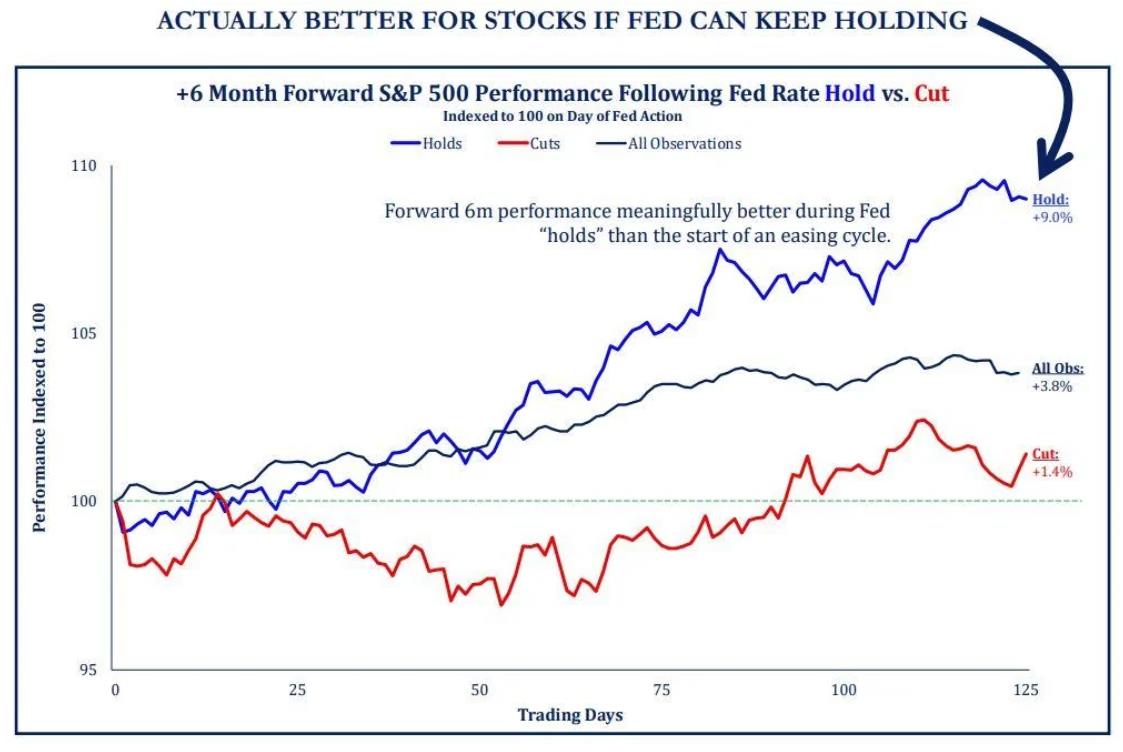Apple faces its longest revenue decline in 22 years, marking the fourth consecutive quarter of contraction in 2023. Despite this, the stock hovers near record highs, raising eyebrows about a potential shift in market direction.
The company is experiencing its worst year in the past 15 years, and historical data suggests that such downturns could lead to a significant stock decline—up to 50%. This juxtaposition of declining revenue and soaring stock prices adds an element of uncertainty to the current market landscape.
Oil’s recent death cross and the VIX’s subdued state, influenced by call option speculation, further add to the economic puzzle. The upcoming oil market dynamics, especially if it breaks to new lows, could serve as a confirmation of a global recession.
Interestingly, the Federal Reserve’s decision to hold rates steady is perceived as beneficial for stocks. Historical data shows that the S&P 500 tends to perform better in the six months following a Fed hold compared to rate cuts, highlighting the market’s preference for stability.
Despite numerous recession indicators pointing to a potential downturn in early 2024, many economists are overlooking them, anticipating more growth and Fed interest rate cuts. The disconnect between indicators and forecasts underscores the complexity of the economic landscape. Delving into labor market numbers provides a clearer picture, revealing hidden signals that could shape the market’s future.
Sources:
🚨STOCK ALERT: $AAPL
•Apple revenue drops for the 4 straight quarter in the company’s longest slump in 22 years in 2023
•Meanwhile the Stock is near record high todays.
•Apple has never had this worst of a year in the past 15 years and last time it happened the stock… pic.twitter.com/cRnOUSXuuu
— The Coastal Journal (@1CoastalJournal) December 8, 2023
The last time oil had a death cross, the VIX hit 35.
Now the VIX is pinned to the mat by rampant call option speculation.
When oil breaks to new lows, it will confirm global recession. And then someone's going to shit a brick.
And it won't be me. pic.twitter.com/FCZHyRlqDu
— Mac10 (@SuburbanDrone) December 8, 2023
Bulls, let's give you something to consider for the weekend. pic.twitter.com/exc3aMr67z
— Mac10 (@SuburbanDrone) December 8, 2023
The Federal Reserve holding rates steady is actually better for stocks, as evidenced by the performance of the S&P 500 following rate holds versus cuts. Stocks tend to do better in the 6 months after a Fed hold than they do after a cut, so it’s clear that investors believe that stability is good for the markets.

Why the Indicators Are Bad but the Data Are Good
We’re not falling off a flight of stairs, just the first step
123 views